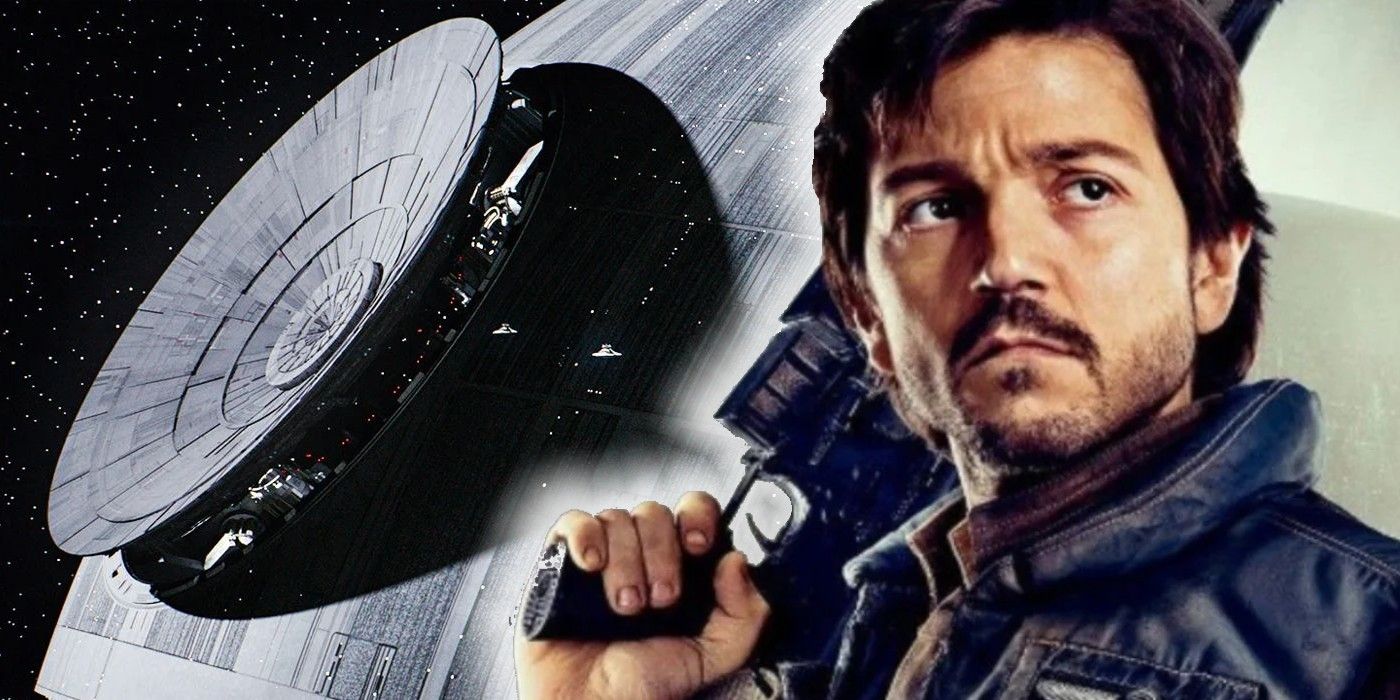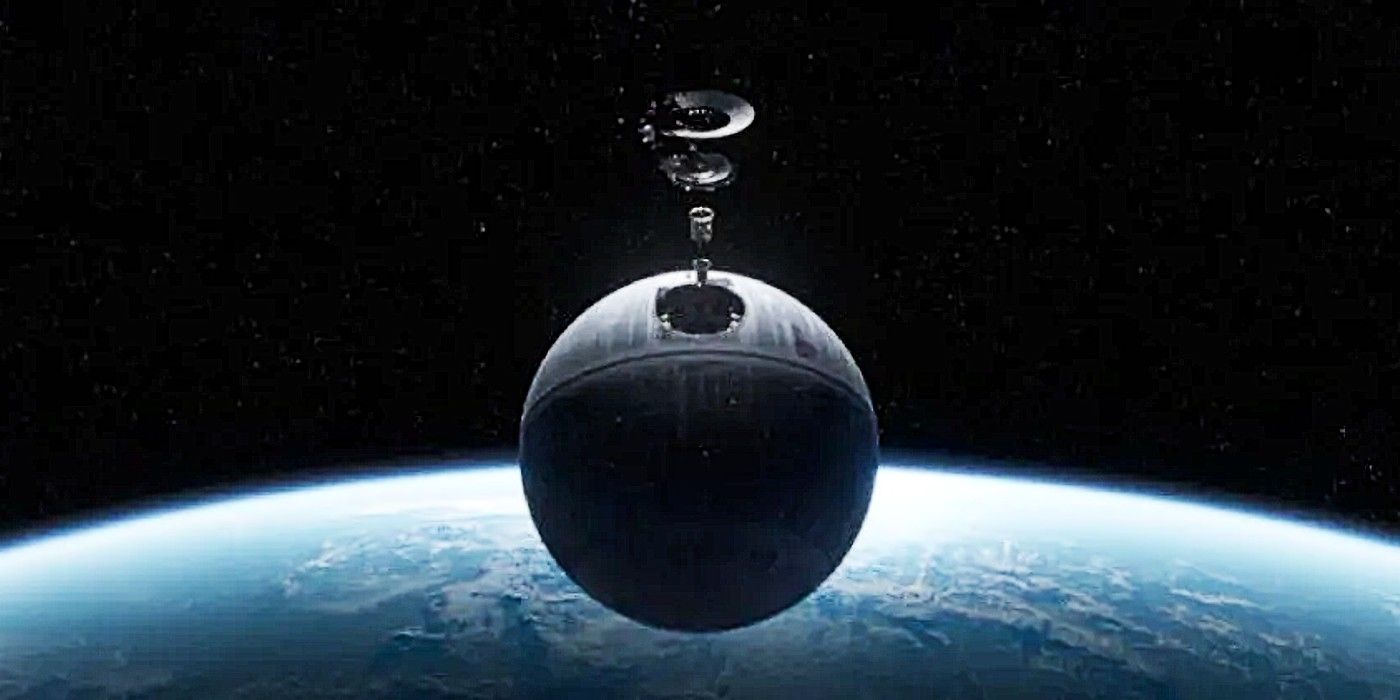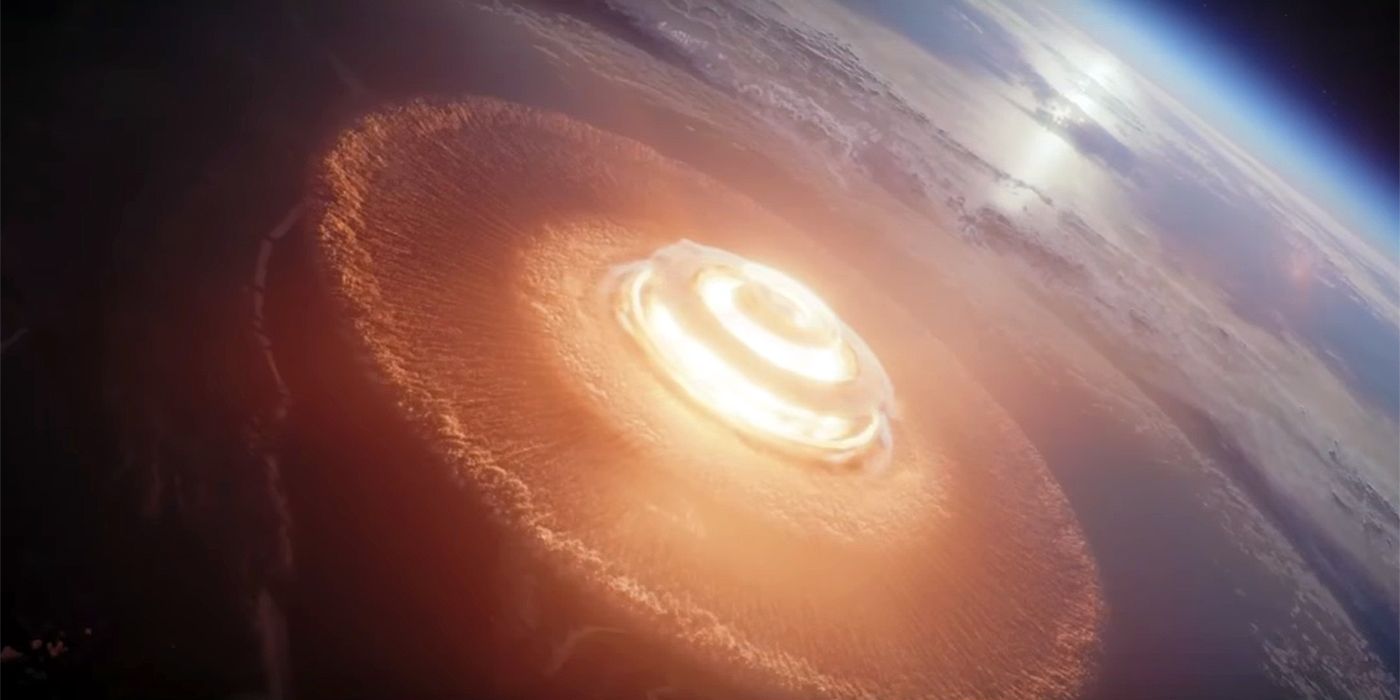The following contains spoilers for Andor Season 1, Episode 12, "Rix Road," now streaming on Disney+.
The Marvel Cinematic Universe is famed for its use of end-credits scenes, both in movies and in streaming series. AlthoughStar Wars films never employed the technique, the franchise's Disney+ series have broken with that tradition, notably in the finales of The Mandalorian Season 2 and The Book of Boba Fett Season 1. Now add to the list the explosive ending to Andor Season 1.
Here's what happened, and what it means for Season 2.
What Is the Andor Finale's End-Credits Scene?
Andor's slow-moving, Byzantine plotlines come to a head in the explosive Season 1 finale, "Rix Road." On the desert planet Ferrix, the death of Maarva serves as a catalyst for bringing everyone together. Cassian spent a few episodes in the bleak Imperial Prison Complex on Narkina 5, but he escaped in "One Way Out," only to learn of his mother's death. Naturally, Cassian wanted to attend the funeral, as expected both the Empire, which wants to question him, and Luthen's gang, which wants to eliminate him, thus, tying up loose ends.
The finale is tense, as Cassian's rivals look for him, and the residents of Ferrix celebrate the life of Maarva. The tension rises to a peak as Maarva appears in an oversize hologram projection to deliver a rousing call to fight the Empire. There are more than a few casualties in the riot that follows. But the seeds of rebellion are sown as the credtis begin to roll, with Cassian joining Luthen.
Fans who stuck around are rewarded with an end-credits scene that has nothing to do with the events of the finale. Rather, it shows one of the most iconic objects in all of Star Wars: the Death Star. More than that, however, it confirmed suspicions that Cassian and his fellow prisoners had been building parts of the space station on Narkina 5. The six-sided pieces assembled by the inmates operate as a kind of connective matrix that locked together parts of the Death Star's dish.
What Andor's End-Credits Scene Means for Season 2
The Death Star scene demonstrates how impactful Andor Season 1 is to the greater Star Wars galaxy. It's set in 5 BBY (Before the Battle of Yavin), and the post-credits sequence establishes the planet-destroying space station was nearly finished at that time. Given the timeline, it may seem odd that it took five years for the Death Star's dish to be configured, but actually makes perfect sense. Cassian's escape from Narkina 5 clearly left the Empire scrambling. It didn't have enough parts to finish, and in that way, Cassian was already benefiting the Rebellion.
The events of Rogue One: A Star Wars Story mean that Cassian and the Rebellion can't find out about the Death Star during Andor. Thus, the end-credits scene will affect viewers more than it does the characters. It will create a sense of dread as Cassian, Luthen and Mon Mothma try and consolidate the Rebellion in Season 2.
However, there's one loophole: Luthen doesn't appear in Rogue One, so all indication is that he won't make it out of Andor alive. Because of that, it's possible he will learn about the Death Star, and be killed for what he knows. The real question, though, is whether Cassian ever finds out he helped build the deadly space station. If he does, it would explain why he was so eager to help destroy it in Rogue One. But even if he doesn't, it still makes his death all the more tragic.
Andor Season 1 is streaming now on Disney+.



